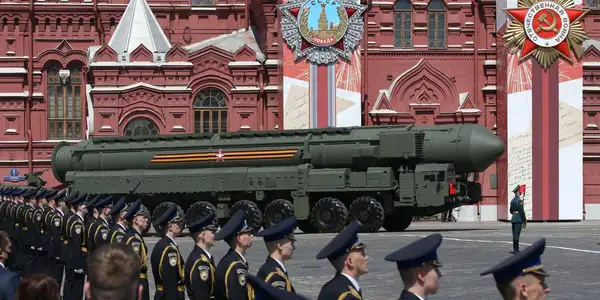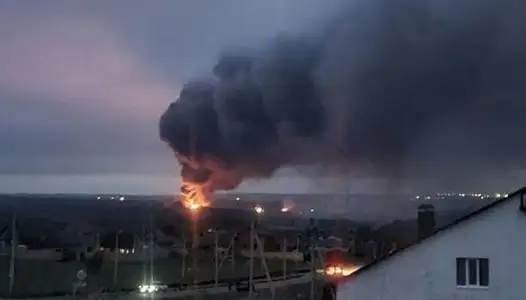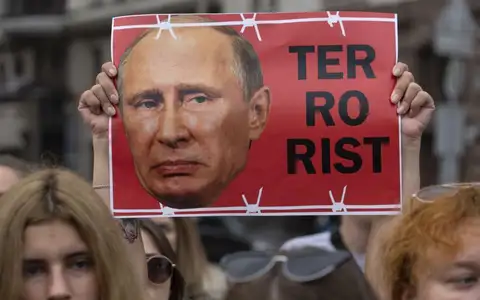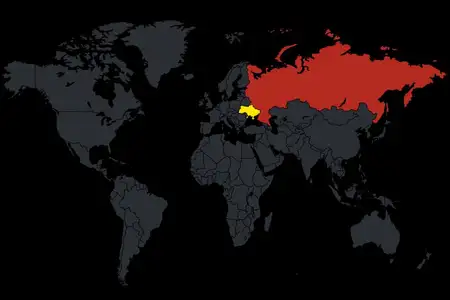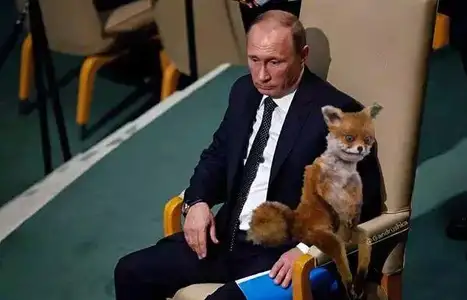Iranian Kamikaze drones: A new threat for Ukraine?
Now, there are daily reports of Russian kamikaze drones attacking Ukraine. Are these small devices capable of becoming a real disaster for Ukraine?
They are being actively shot down, nevertheless they manage to regularly hit military equipment, energy infrastructure and civilian homes deep in the rear. The most recent attack on Kyiv on October 17 killed at least four people (among them a pregnant woman) and caused widespread destruction in the capital.
We have compiled the most important information on Iranian kamikaze drones, on the issue whether they can change the course of the war, and how to deal with them.
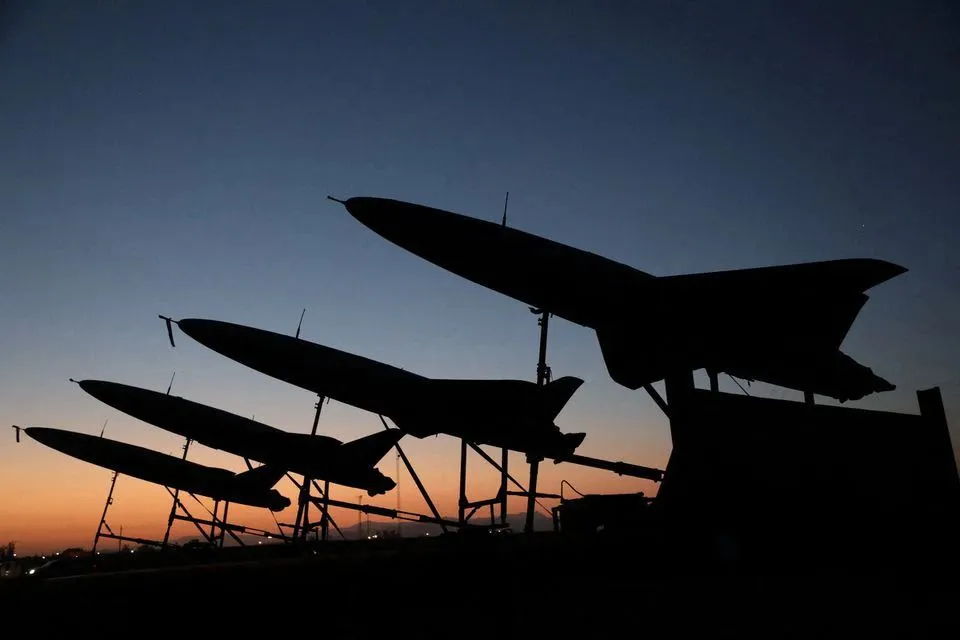
Why have the Russians started using kamikaze drones so actively?
As military experts note, it was only a matter of time that the Russian Federation would start striking cities with Iranian drones Shahed-136 and Shahed-131 for the purpose of terror. The first reports of Russia’s use of Shahid-136 kamikaze drones in the war against Ukraine appeared in early September. The first city they struck on September 23 was Odesa, which had previously been shelled by Russian troops with Iskander, Kalibr and Onyx missiles.
According to military expert analysis, now the Iranian kamikaze drones are a kind of “substitute’ for cruise missiles, the arsenal of which is slowly depleting in the Russian army.
As of October 11, Ukrainian Defense Minister Oleksiy Reznikov published data on the actual Russian arsenal of high-precision missiles. According to it, there are just over 600 Iskander, Kalibr and air-launched cruise missiles left in Russian stockpile.

The balance of long-range missiles of the Russian Federation is no longer enough to fully charge all carriers, and the existing level is already below the “dead storage”.
The 609 missiles of the listed types available in the Russian stockpile still allows to carry out about 6-7 massive missile attacks like the one that was carried out on October 10. But it should be taken into account that cruise and ballistic missiles in the Russian Federation are also assigned the task of strategic deterrence.
The figure of 23% of the balance of the total stockpile is already below the level of the “dead storage”. And its further use means for the Kremlin turning its once powerful and formidable fleet and strategic aviation into a “decoration”.
But, as practice shows, the running out of missiles of a certain type does not mean for the Kremlin to abandon terrorist missile strikes. And the enemy has long been using outdated Kh-22, anti-aircraft missiles for S-300 as well as OTR-21 Tochka returned from storage, anti-ship P-800 Oniks for indiscriminate attacks on cities. And when the stocks of these missiles began to “break down”, it began to actively use Iranian Shaheds.
What are kamikaze drones?
Kamikaze drones, also known as “suicide drones”, are a special type of aircraft. Their official name is “loitering munition” because they can be preloaded with data about the target, and they will search for it on their own or simply strike at the specified coordinates. Such drones combine the features of a UAV and a bomb warhead.

Their important advantages are as follows:
- These are drones that can stay in the air for a long time, selecting a target and then attacking it like a cruise missile.
- On the one hand, they are indeed similar to cruise missiles. The difference is that a missile usually flies to the target on a predetermined and more or less predictable trajectory, performing maneuvers taking into account the terrain, while a drone is able to fly like an aircraft, changing course, speed, and position in space actively and unpredictably.
- They are cheap (normally, a mere $20,000 apiece), so they can be used en masse, hoping that some of them will be able to bypass the enemy air defense forces.
- At the same time, they can fly for hundreds of kilometers (up to a thousand), that is, to act at operational depth, striking at important objects. Usually, they fly in groups of several units to overcome anti-aircraft fire.
- Another advantage of the device is that several such drones are launched from a container that can be easily disguised as a truck. The launch itself is not as visible from radar as the launch of a cruise missile.
- Accordingly, the fight against such drones is not easy. The loitering munition flies at a low altitude and is difficult to track by radar.
Ukrainian experts also said that the Russians replaced the guidance system of the Iranian Shahhed-136 kamikaze drones, as a result of which they became more highly accurate, more distant and even more dangerous. They have also “rebranded” them as Geran-2 (that is why you can see the Russian inscription “Герань-2” on damaged drones).
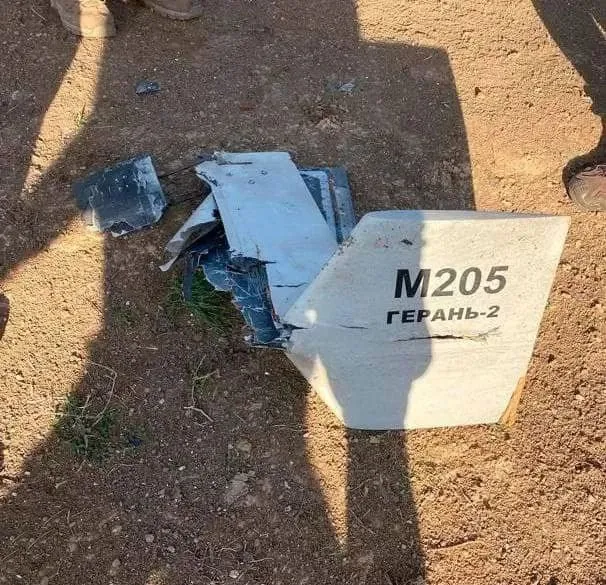
However, there are still some disadvantages: first of all, low speed and rather large dimensions. The wingspan of the Shaheds is 2.5 meters, and the length is 3.5 meters.
Moreover, the device emits a loud buzzing sound, clearly audible on the ground. It is similar to the sound of a moped engine, which is why they are so popularly nicknamed. The approach of a “moped” can be heard at a distance of more than 10 kilometers.
Most often, Russia attacks Ukrainian territory with Iranian Shahed-136 kamikaze drones, as well as UAVs of its own production Lancet. The maximum speed of the latter is 110 km/h during horizontal flight and 300 km/h when attacking a target, and the longest range is 40 km, the Air Forces of the Armed Forces of Ukraine noted.
How many Iranian drones has Russia bought and what it uses them for?
On October 18, Zelensky stated that over the past week, a third of the power plants have been affected in particular due to the kamikaze drones.
The Russian army uses Shahed-136 drones to strike at Ukrainian critical infrastructure, because these UAVs are more effective for such purposes than for attacks on people. This was stated by the head of the joint press center of the Defense Forces of the operational command ”South” Natalia Humeniuk.
“The fact that they are trying to use these drones on critical infrastructure facilities (to deprive us of water, heat, electricity) is based on their tactical and technical characteristics, as these drones work like matches. It is like a lightning strike that ignites a certain object and disables it not so much by an explosion as by fire. Using it on crowds of people is not so effective,” Humeniuk noted.

According to her, the figures on the presence of a certain number of kamikaze drones in the Russian army are controversial, but the Ukrainian military records their accumulation in the temporarily occupied territories and on the northern borders of Ukraine.
The spokesman for the Air Forces Command Yuriy Ihnat believes that the Russian army is increasingly using Iranian drones in the war against Ukraine because it saves high-precision missiles, as well as because of the convenience of these UAVs for strikes.
“Russia has stopped actively using its high-precision missiles, which cost millions of dollars. Perhaps it is preparing them for strikes on critical infrastructure in the autumn/winter period. Therefore, it sends much cheaper Iranian kamikaze drones to strike at long range. The Iranian Shahed-136 drone, though primitive, is a weapon,” Ihnat explained.-
During his speech to the G7 on October 11, President of Ukraine Volodymyr Zelensky said that the Russian Federation had ordered as many as 2400 Shahed-131 and Shahed-136 kamikaze drones from Iran.
The American Institute for the Study of War (ISW) in its report said that Russia could conclude a contract with Iran for the purchase of Arash-2 drones, “faster and more destructive” than the previously received Shahed-136.
Can kamikaze drones change the course of the war?
As of October 19, the Armed Forces of Ukraine (AFU) have shot down 223 Iranian kamikaze drones. It was also reported that Ukrainian Air defense destroys up to 85 percent of Shahed-136 drones launched by Russia for strikes on Ukrainian territory. According to experts, this is a very high rate.

The analytical report of the ISW says that the use of Iranian-made drones by Russia will not have the same effect as it happened with the use of HIMARS systems provided by the United States. And it is unlikely that Iranian kamikaze drones will significantly affect the course of the war.
According to ISW, Russian troops do not concentrate these drones near the battlefield. They use many UAVs against civilian targets in the rear for terror, and such actions do not change the combat picture at the front.
Ukrainian military observers also believe that drones cannot cause significant damage on the front line in particular because they are ineffective against moving targets.
The former commander of U.S. forces in Europe, General Mark Hertling, shared the same opinion. Three factors determine the course of a war: the support of the population, the military capability of the army and the strength of the government. None of these key factors for Ukraine has changed as a result of the Iranian drone attack, the general said.
“He (Putin – ed.) is not using these drones against the troops because it is very difficult for him to hit key positions. The drones that have been used in the last few days are attacking fixed targets, they rely on geolocation and they cannot find these valuable military targets because the Ukrainian military is very successful in terms of their operational security and they are moving forward very quickly. So, this tactic of using drones does not change the course of the war. But it does show that Putin and his army are running out of precision weapons, and they have to rely on buying weapons from foreign governments like Iran,” General Hertling notes.-

At the same time, Ulrike Franke, a senior fellow at the European Council on Foreign Relations, emphasizes that kamikaze drone attacks, if not changing the course of the war, still complicate the counteroffensive for the Ukrainian army, which is forced to prioritize the use of its resources.
“I agree that these attacks are aimed at terrorizing the population and destroying key civilian infrastructure. However, there is also military logic here. If they carry out these attacks everywhere, it means that the military will be busy repelling these attacks. [...] this exhausts the resource. This means that the Ukrainian military has to defend the skies, in fact, everywhere over Ukraine. [...] So part of the army will be involved in this. They also have to use all their anti-aircraft weapons. And the question is how many of these weapons they have. And whether the West will continue to provide more,” Ulrike Franke noted.-
Therefore, Ukraine urgently needs to ensure reliable protection against kamikaze drones to focus on the frontlines.
How to protect Ukraine?
The Ukrainian leadership claims that these drones are of Iranian production, and by exporting them to Russia Iran violated UN Security Council Resolution 2231, which provides for an embargo on Iran’s export of certain types of weapons, without the approval of the UN Security Council.

Despite the obvious fact and evidence that the drones are supplied to Russia from Iran, Tehran continues to deny transferring drones to Russia. Moreover, it is reported that Iran promised Russia additional drones and ground-to-ground missiles.
So, there are two main directions to protect Ukraine from the drone invasion: 1) to pressure on Iran in order to stop supplies; 2) to strengthen the Ukrainian air defense system. The Western partners began to work on both aspects.
- Pressure on Iran
Ukraine officially called Iran an accomplice of Russian war crimes. It revoked Iranian ambassador’s accreditation and significantly reduced the number of diplomatic staff of the Iranian Embassy in Kyiv. On October 17, Ukrainians held a rally near the Iranian Embassy in Kyiv demanding to stop the sale of kamikaze drones to Russia. Meanwhile, the Ukrainian Foreign Ministry suggests Zelensky to break diplomatic relations with Iran.

The civilized world has also responded adequately to the use of Iranian drones for insidious massive attacks on Ukraine. The US stated that Iran is lying when it says it didn’t sell drones to Moscow. Accordingly, it intends to increase sanctions against Iran. They would likely include economic restrictions and export controls that would target third parties that help Tehran and Moscow.
The European Union plans in a few days to impose sanctions on Iranian individuals and entities. The new package should become a “strong signal” to Tehran, whereas such individual sanctions are faster to impose than economic sanctions, officials say.
- Strengthening the Ukrainian air defense system
After the sixth meeting of the contact group in the Rammstein format, it was reported that the United States is considering the option of creating an integrated air and missile defense system in Ukraine. This system should combine short-, medium- and long-range means. The combination of all these means will allow closing the airspace to Russian aircraft.
On October 18, the NATO Secretary General, Jens Stoltenberg, announced the transfer of means to counter Iranian kamikaze drones to Ukraine “in the coming days”.
Among the air defense systems which are expected to come to Ukraine from the partners soon are:
- NASAMS complexes from the US: first, two batteries of the complex will be delivered to Ukraine, each of which will have about eight units with a command post and a radar to track enemy missiles.
- AMRAAM missiles from the UK: missiles that can be operated in all weather conditions. This type is effective against cruise missiles, kamikaze drones, and other aerial targets. AMRAAM missiles can be used for NASAMS, but also by fighter aircraft.
- IRIS-T systems from Germany: Earlier, Germany was thinking for a long time whether to provide weapons to Ukraine, but now the first IRIS-T air defense system has begun to defend our skies and has already shown itself very well. In the near future, three more such systems will arrive to reinforce it.
In fact, IRIS-T is the most modern air defense system, as it was completed only in 2014. And it is in Ukraine that it is starting its work for the first time.

If these and other defense systems are indeed delivered to Ukraine soon and in the necessary (or close to necessary) quantity, we will be able to effectively protect Ukrainian cities from attack by Russian/Iranian drones and missiles.
As we can see, Putin’s actions continue to have the opposite effect. Trying to intimidate Ukrainians with repeated terrorist attacks he only encourages the West to be more decisive and active in its support for Ukraine.
Indeed, the damage from Iranian drones is substantial. And we, as always, should not underestimate the risks. But Putin should not hope that with the help of the “mopeds” he will be able to seize the initiative, much less turn the tide of the war in his favor.
Anastasiya Glotova


















